Note
Access to this page requires authorization. You can try signing in or changing directories.
Access to this page requires authorization. You can try changing directories.
This article provides example screenshots and descriptions for the most common Microsoft Loop admin settings configurations. Use the sections below to understand the user experience for each scenario, based on how you have configured Loop in your organization.
Default configuration
The screenshots in this section illustrate the typical user experience when Loop admin settings are left in their default Enabled state. These examples help IT administrators understand what users see and can do when no custom restrictions are applied.
Loop components in Teams and Outlook
Users can create and share Loop components directly within Teams and Outlook messages. When creating a new Loop component or when a Loop component link is pasted into a message, it renders as an interactive component, allowing recipients to collaborate in real time without leaving the message context.
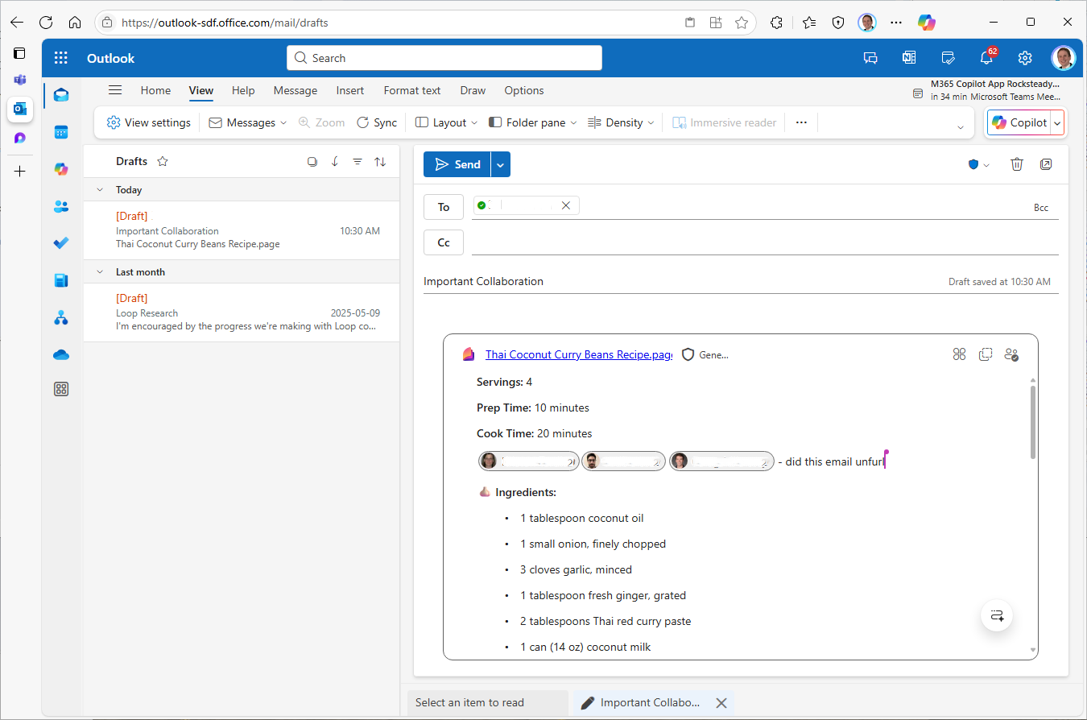 Outlook draft message with Loop component
Outlook draft message with Loop component
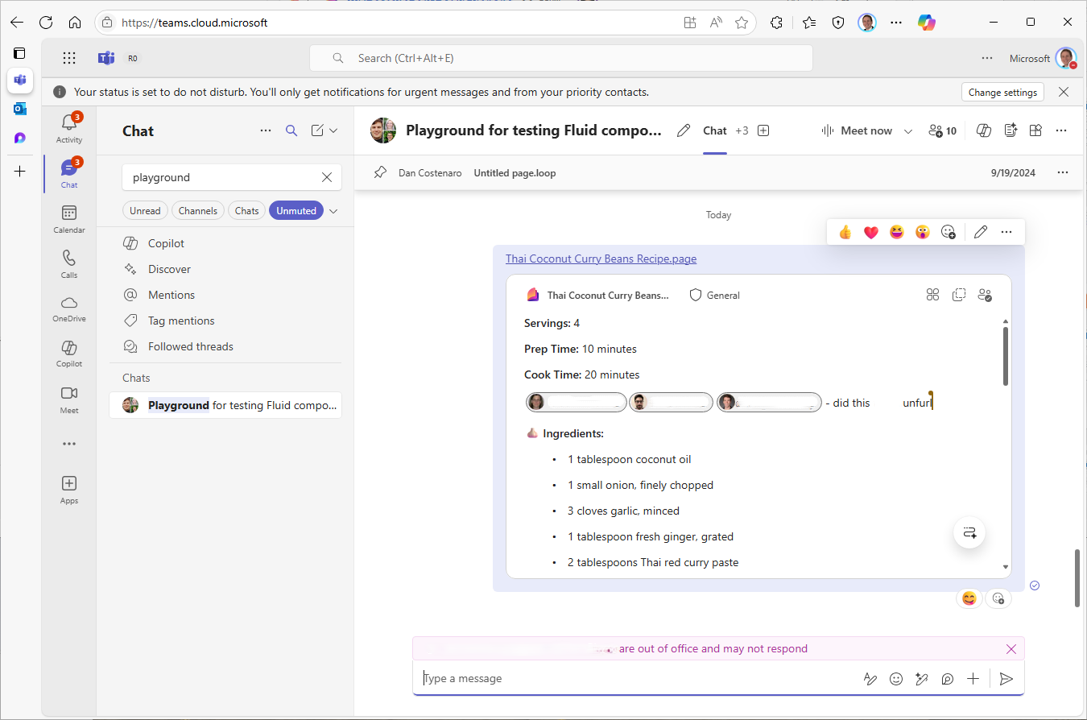 Teams sent message with same Loop component
Teams sent message with same Loop component
Loop components in the Loop app
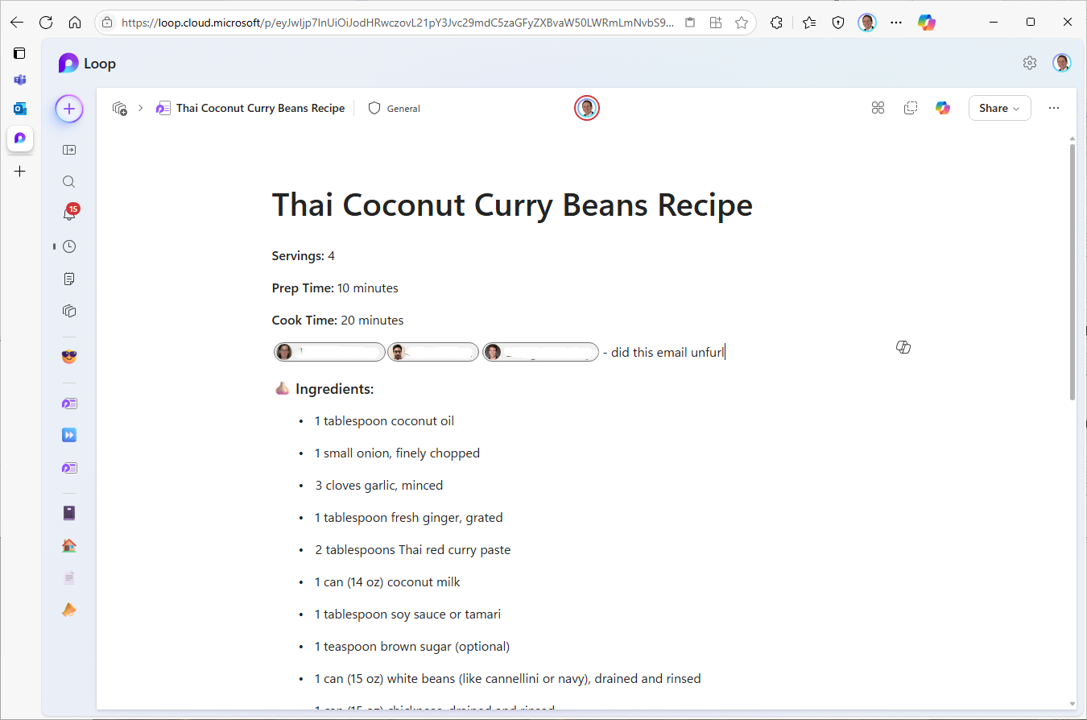 Loop component editor/viewer enabling full screen interaction with the same Loop component
Loop component editor/viewer enabling full screen interaction with the same Loop component
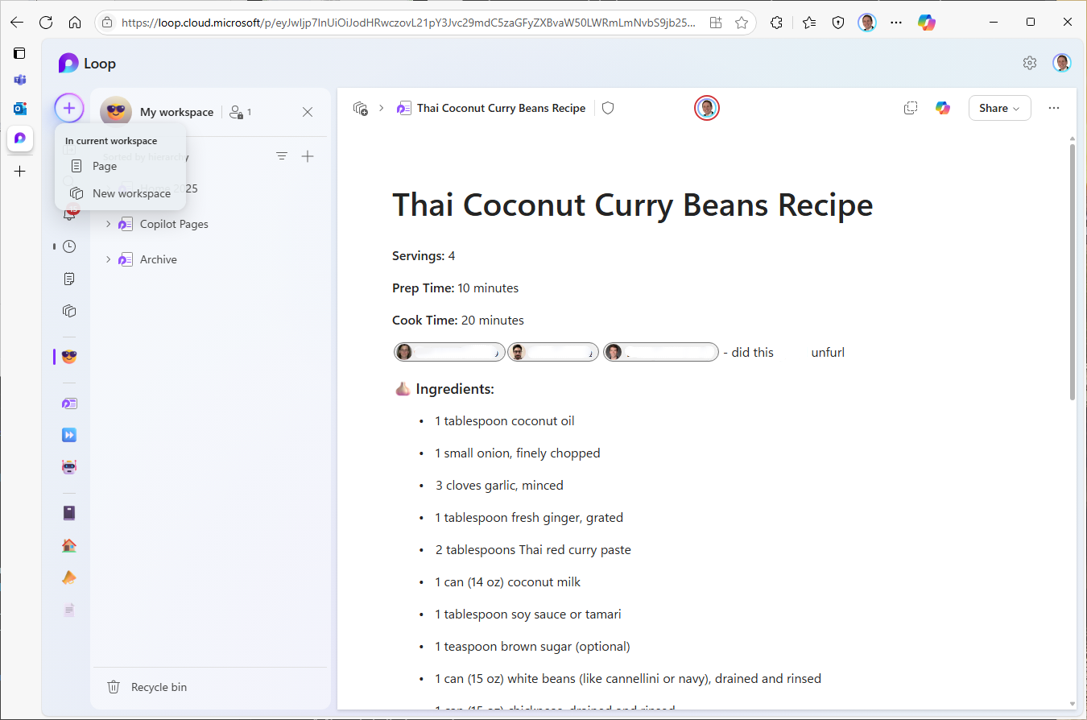 Loop app user experience for creating new components or new workspaces
Loop app user experience for creating new components or new workspaces
Expected user experience when all Loop creations are Disabled
When admin controls are all set to Disabled, users can't create new Loop files or new SharePoint Embedded containers. Existing Loop files and workspaces remain accessible; users can still find, open, and edit them if they have the appropriate permissions. No existing data is deleted.
Loop content and icons may still appear in Microsoft 365 apps, including Microsoft365.com and the Loop component viewer/editor (loop.cloud.microsoft). Previously created files remain visible and accessible, and shared links continue to work as permitted by file permissions.
There are no extra licensing requirements for the Loop component viewer/editor beyond OneDrive access. Users can access Loop content via loop.cloud.microsoft or the All apps view in Microsoft365.com. To hide the Loop icon in the All apps view, disable OneDrive access for those users or use a conditional access policy to block access to loop.cloud.microsoft.
Loop workspace creation Disabled, Loop component creation Enabled
When Loop admin settings allow users to create Loop components but block the creation of Loop workspaces, users have access to a focused set of features. Users can continue to create and collaborate on Loop components within Teams and Outlook, maintaining real-time collaboration and productivity. However, the ability to create new workspaces in the Loop app is disabled. This configuration enables IT administrators to restrict workspace creation while still supporting collaborative component use across Microsoft 365 apps. Users can also open and edit Loop components in full screen using the Loop component viewer/editor.
Loop components in Teams and Outlook, unchanged
Refer to Loop components in Teams and Outlook as the configuration and experience is the same in this scenario.
Loop components in the Loop app, Loop workspace creation Disabled
In this scenario, workspace creation is not enabled for the user at any point. As a result, no workspaces appear, including the "My workspace" personal workspace, and users can't create new workspaces. The Loop component viewer/editor remains available, so users can open and interact with Loop components created in other Microsoft 365 apps such as Teams or Outlook.
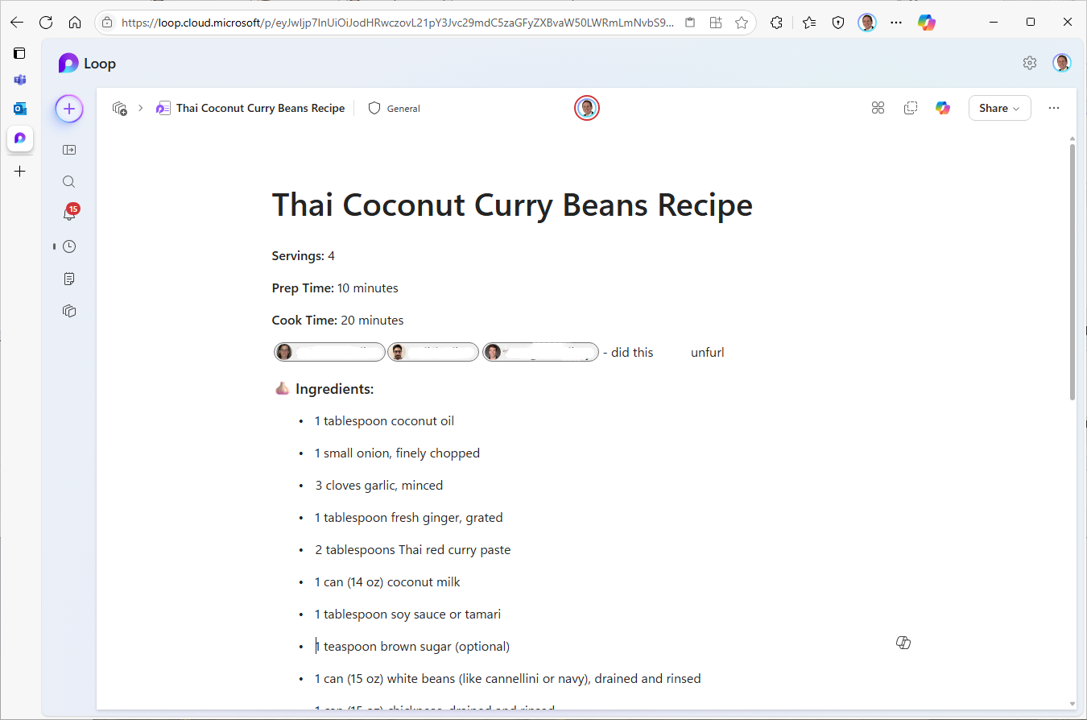 Loop component viewer/editor enabling full screen interaction with a Loop component
Loop component viewer/editor enabling full screen interaction with a Loop component
When users access the Loop app in this configuration and select the Create button, no creation options are presented. This is because the admin setting for workspace creation is disabled. Users can't create new workspaces from the Loop app under this policy configuration.
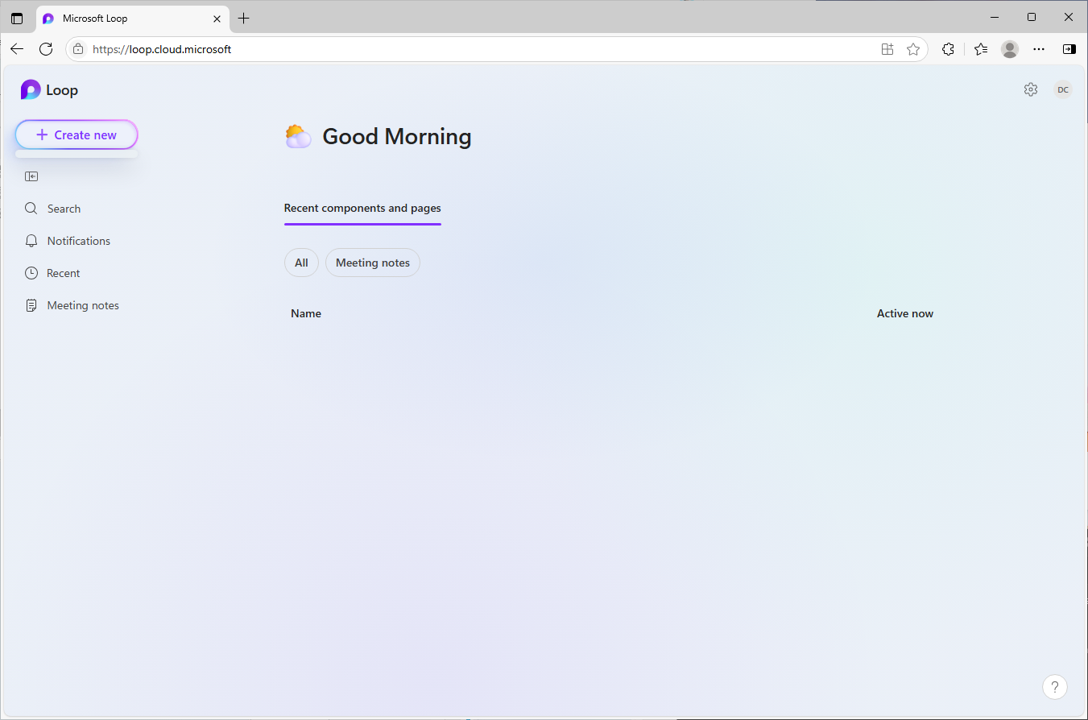 Loop app Create menu opened, showing no workspace creation options because workspace creation is disabled by the administrator
Loop app Create menu opened, showing no workspace creation options because workspace creation is disabled by the administrator
Loop workspace experience when workspace creation is Disabled after initial Enablement
In this scenario, workspace creation was initially enabled for the user, allowing them to create workspaces and content. After the administrator disabled workspace creation, the user lost the ability to create new workspaces or content. However, all previously created workspaces and files remain visible and accessible, subject to existing permissions. IT administrators should note that disabling workspace creation doesn't remove or restrict access to existing content; users retain access based on their current permissions for each workspace and file.
 Loop app Create menu opened, displaying existing content while workspace creation is disabled by the administrator
Loop app Create menu opened, displaying existing content while workspace creation is disabled by the administrator
Related topics
Admin
- Summary of Compliance, Lifecycle, Governance
- Requirements
- Storage
- Permissions
- Admin toggles
- Data Integrations Admin Settings